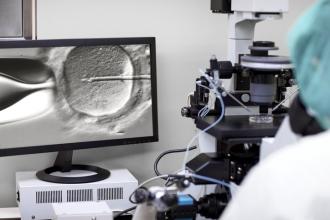IVF mishaps
A report in the British press (Sunday Telegraph 24 September 2000:4) states that 39 patients at two fertility clinics in Hampshire have been told that their frozen embryos are missing or unusable. Ten were patients at the assisted conception unit of the National Health Service’s North Hampshire Hospital and 29 were patients at the privately operated Hampshire Clinic in Basingstoke. An embryologist who worked at the latter has been suspended on full pay. An internal investigation is being conducted under the aegis of the Human Fertilization and Embryo Authority. An inspection from the HFEA found discrepancies in the paperwork and discovered that glass straws supposed to contain embryos were missing from the liquid nitrogen storage tanks.
In New York, a judge ruled in 1999 that a black baby born to a white woman after treatment in a Manhattan clinic belonged to the biological parents and that the embryos had been inadvertently interchanged. A set of IVF twins born in Holland in December, 1993 in Utrecht were noted to be quite different, with one baby having much darker skin. Polymerase chain reaction studies confirmed that the second child was the offspring of a man from Dutch Antilles, whose sperm had not been thoroughly rinsed from the pipette before it was reused.
Ironically, the Human Fertilization and Embryology Authority was formed on the recommendation of the Warnock Human Fertilization and Embryology Commission as far back as June 1984.
In Canada, the Royal Commission on New Reproductive Technologies 1993, chaired by Dr Patricia Baird, OC, made a similar recommendation: Bill C47 would have created a government agency to store, regulate, and distribute human sperm and embryonic tissue. The bill died on the order paper in 1997 when Parliament was dissolved.
No amount of regulation can prevent human error. If Canadian women have been mistakenly impregnated with an embryo other than their own, we have not heard of it. Perhaps it is better thus.
—H.E. Woolley, MD
Vancouver
Dr Woolley is quite correct—no amount of regulation can prevent human error. But he, and all others concerned about the possibility of mistakes in the handling of gametes and embryos, must be aware that this is also the chief concern of laboratory and clinical staff involved in reproductive technologies. Identification systems with multiple levels of redundancy and color-coding are used to ensure that, theoretically at least, any single mistake in identification would need to pass multiple checks in order to have the wrong gametes or embryos used. The UBC programs do not re-use pipettes for sperm. Physicians and patients can be confident that the possibility of error is as small as we can reasonably make it.
—TCR

